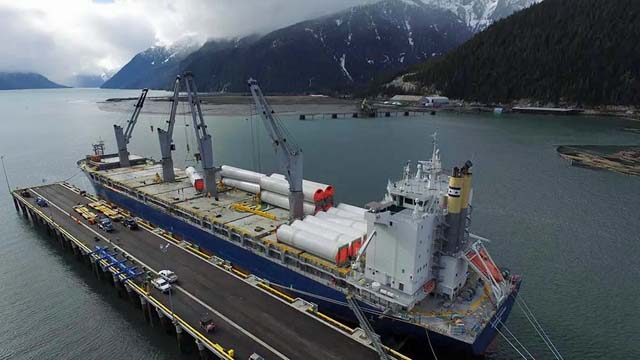A group of industry experts led by Grieg Star Shipping has concluded that deep-sea shipping can transform to ammonia as fuel, but there are several difficult hurdles to overcome.
The group examined the possibilities of retrofitting an open hatch vessel to run on green ammonia, under the study which was initiated and facilitated by the Norwegian Green Shipping Programme (GSP).
Grieg Star MD Atle Sommer said: “We promised to share our findings, and this is the whole report – unabridged. The transformation our industry is grappling with now demands knowledge-sharing and transparency. We hope our findings can help other companies.”
GSP Director Narve Mjøs said: “Ammonia as fuel will most likely be a preferred alternative for deepsea shipping to achieve IMOs ambition and the Paris agreement’s targets. As Norway and the Norwegian maritime industry have been a front runner when it comes to battery-powered ships for coastal shipping, we will follow up and be ready for the green shift into deep sea shipping and ammonia as fuel too.”
GSP is urging other similar projects to take advantage of the GSP-developed Ammonia as a Marine Fuel Safety Handbook.
The study aimed to assess the technical and commercial feasibility of retrofitting an open hatch bulk carrier for green ammonia operations in a trans-Atlantic route, examining key barriers, risks, and possibilities as well as formulating a business case look, and considering the viability of green ammonia for the specific trade. The report’s conclusion begins: “Elements we perceived as challenges have turned out not to be barriers or present major risks for moving forward with a retrofit project.”
Still, the report concludes that the main challenge today is the combination of high retrofit investment costs, lack of availability and competitively priced ammonia, and unclear effects of regulatory frameworks.
The report concludes: “The two latter items are the main governing factors for return on a retrofit investment. Without the stability of green ammonia availability/ pricing for the maritime sector (potentially green corridors) and, even more importantly, stable framework conditions, financing such a venture is not viable, even with significant soft project funding.”
Sommer said: “We still see green ammonia as one of many possible fuels for shipping in the future. Currently, it seems more viable for multifuel-ready new buildings than for retrofitting current ships. The study also shows that we need changes on a political and regulatory level to make the change for the existing world fleet.”
In total, 21 entities participated in the study’s five workstreams, with workstream leads from Yara, the Norwegian Maritime Authority, G2 Ocean and Grieg Maritime Group.
Sommer concluded: “We are forever grateful for our partners’ eagerness and willingness to share their knowledge and insights. A special thank you to the Green Shipping Program, their pilot coordinator, Hans-Christian Wintervoll, and all the workstream leads; Tessa Major (Yara), Therese Landås (NMA), John Garbiel Östling (GS), Henrik Bredesen (GMG), Henning Rebnord (G2O) and Torleif Frimannslund (GS).”
The report can be downloaded here.



